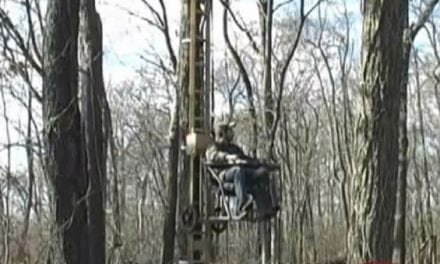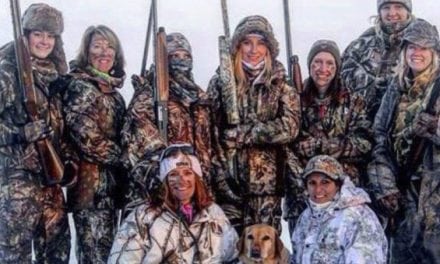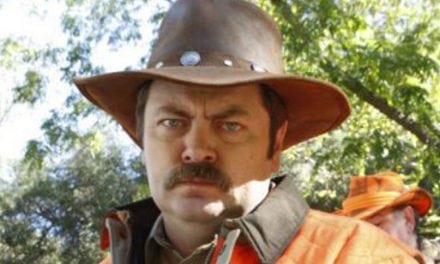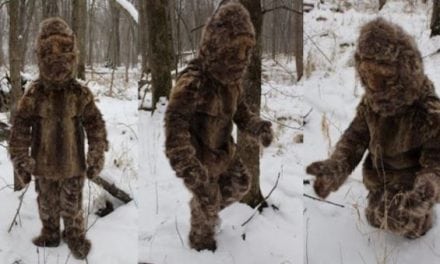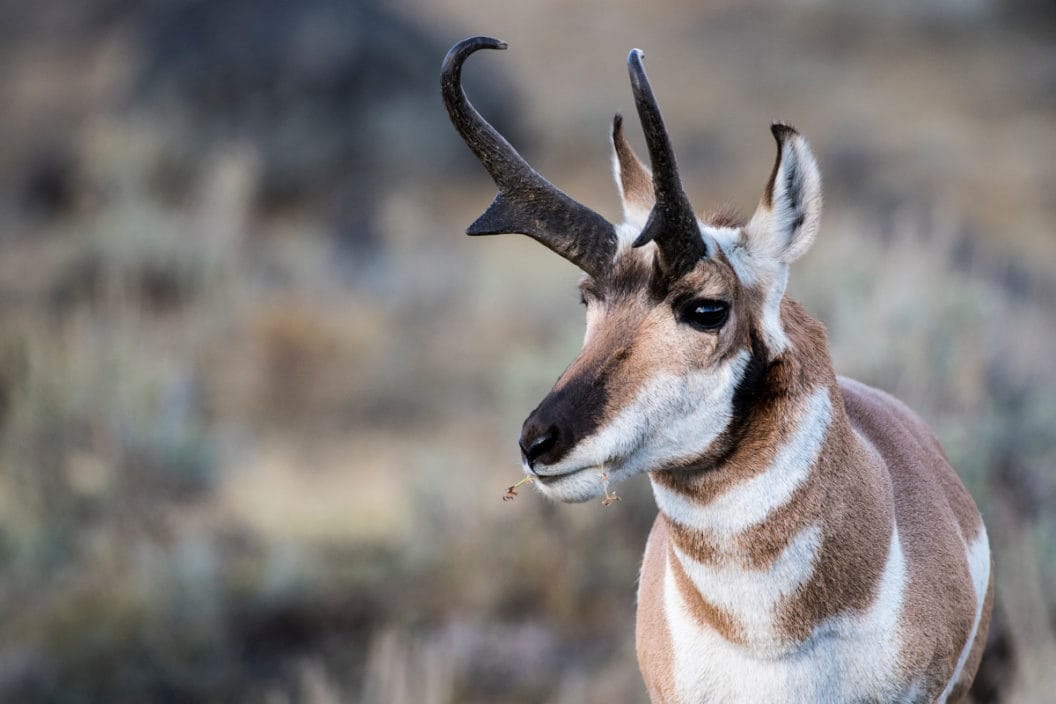
If you’ve ever driven across a western state like Wyoming or Montana, odds are you’ve seen the graceful herds of pronghorn antelope (Antilocapra americana) blazing across the sagebrush of the high desert plains. Few people realize they’re looking at the fastest land mammal in North America. In fact, only the cheetah gives it a run for its money in the speed department. They’re not really an antelope and are more closely related to giraffes than other wild ungulates in the states, which is what makes their presence here so special. In addition, not many people realize this animal represents one of the great North American wildlife conservation success stories of the last 100 years. At one point, these beautiful animals had a population that only numbered around 13,000 animals. It was through some aggressive work by hunters and conservation organizations that the animals came roaring back from the brink of the endangered species list. Today the pronghorn population hovers around 1.1 million animals and they can be found wandering public lands in many states. This is how a group of dedicated conservationists brought this species back from the brink of extinction.
What happened to the pronghorn to make it nearly go extinct?
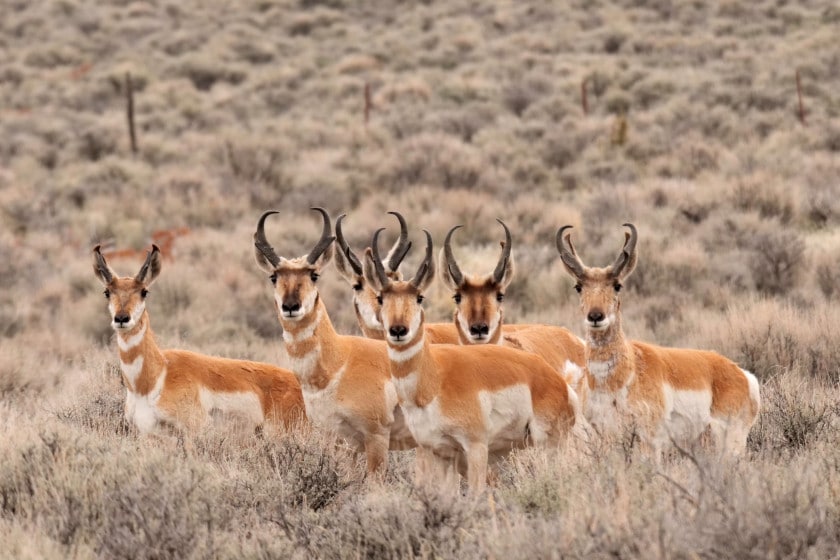
Getty Images: mlharing
There’s no question the pronghorn is a true survivor. They’ve been on the continent for over a million years now and are the lone survivors of the greater Antilocapridae family here in North America. Before the arrival of European explorers, the pronghorn, much like other big game species, roamed a much larger range. It only experienced hunting pressure from Native Americans. According to the IUCN, at one point, there may have been as many as 35 million of them roaming the plains.
Explorer William Clark recorded the first documented harvest of one of these animals by a non-Native American during the famous Lewis and Clark expedition in what’s now Nebraska. In the decades that followed the pronghorn’s native range saw an influx of explorers, settlers, trappers, traders, and farmers. Much like other game animals like the whitetail deer, elk, and wild turkey, pronghorn numbers started slipping because there were zero hunting regulations.
Although, there were other factors contributing to the slow fall of the pronghorn. The U.S. Fish and Wildlife Service notes pronghorn numbers were at their lowest in Nevada in 1920. While overhunting played a part, blame can also be placed on a series of cold and dry winters. There were also a ton of farms sprouting up in prime pronghorn habitat. The famers either let their cattle graze completely unchecked, or they plowed up the great plains for crops, creating habitat fragmentation. This deprived these herbivores of their native food sources and disrupted pronghorn migration routes. These animals had out-lived vicious predators like the sabre-toothed cat, but just couldn’t compete with a herd of cattle.
Conservation efforts begin
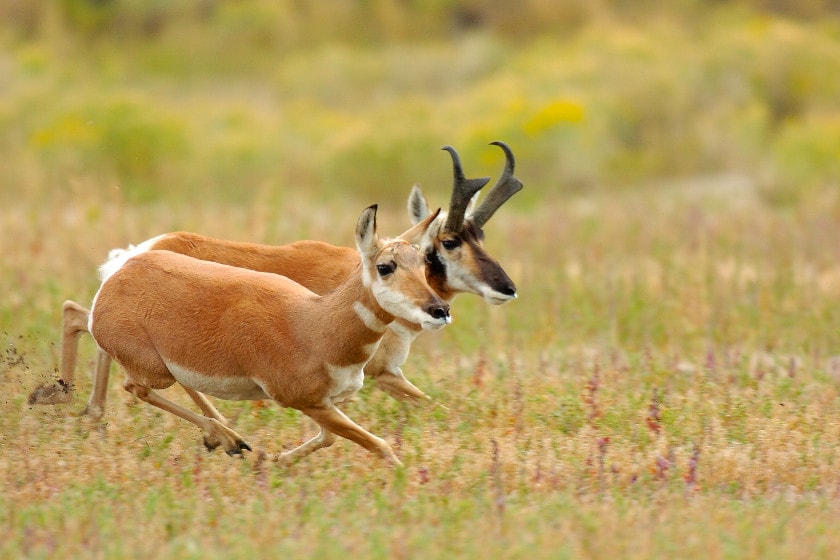
Getty Images: VW Pics
One of our oldest conservation organizations, the Boone and Crockett Club, played a heavy part in the restoration of the pronghorn. However, their early efforts around 1910 to restock the animals in parts of South Dakota, Oklahoma, and Montana ended mostly in failure. Conservation efforts often require a lot of trial and error, as was showcased with the recovery of the wild turkey. The pronghorn was no exception to this rule.
Around 1920, Boone and Crockett member Charles Alexander Sheldon realized the animals were nearing the point of no return. He penned a letter to B&C founding member George Bird Grinnell, urging the club to make more of an effort, even if the species was already doomed to extinction.
In turn, Grinnell united more members of Boone and Crockett and the U.S. Fish and Wildlife Service (then called the U.S. Biological Society) to the effort. In turn, the U.S. Fish and Wildlife Service brought on members of the Audubon Society, including one of the founders and President, Dr. Gilbert Pearson.
The conservationists knew pronghorns needed a space to roam where they wouldn’t need to compete with cattle for food. They started by purchasing a little under 3,000 acres of land in Nevada for expressly that purpose. According to the U.S. Fish and Wildlife Service, it was E.R. Sans who suggested a large additional piece of property in Nevada called the Last Chance Ranch owned by George B. Hapgood as the ideal location to start.
Fast-forward to 1931 and the official creation of what is now known as the Sheldon National Wildlife Refuge, named for Charles Sheldon. President Herbert Hoover signed an executive order that made the purchase official on January 26, 1931. The size of the new wildlife refuge was expanded further in 1936 after President Franklin Roosevelt signed a second executive order. This pushed the size of the refuge to a staggering 549,000 acres.
The new refuge, along with new hunting regulations to protect the remaining animals, worked. One of the fastest land animals on the planet began a slow but steady comeback to the numbers we have today. Eventually, the herds stabilized to the point where hunting seasons could be re-established.
Efforts are ongoing
While these conservation efforts have been successful for most pronghorns, many state wildlife agencies are still working on restocking efforts to bring these animals back to their native range. In some areas it’s been slow going. Some states like California, Texas, Utah, still have quite limited pronghorn hunting simply because the numbers just aren’t there yet.
Plenty of other states are still working on their restocking efforts. In some cases, the restoration of the pronghorn has led to side habitat projects. For instance, as the National Parks Conservation Association notes, despite being hoofed animals like deer, pronghorns are not jumpers. This means they have a problem with fences, and if you’ve ever driven through the west, you know there are plenty of them out there. The NPCA started a massive project in 2010 to modify or outright remove fences in the greater Yellowstone area so the animals can start using their historic migration routes once more.
While pronghorns may have robust herds in places like Oregon, Wyoming, New Mexico, or Colorado, there are certain subspecies protected by the Endangered Species Act that are still struggling. The Sonoran pronghorn subspecies lives in the arid ecosystem of the Sonoran Desert. While these animals are built for the heat of the region, in 2002, an especially brutal drought hit the area and their numbers dipped to only 21 animals. Many biologists were amazed they didn’t go extinct right then and there, and recovery efforts have been slow ever since. They’re up to around 200 animals now, so it’s going to take some time for this subspecies to rebound. A nonprofit called the Arizona Antelope Foundation was formed to help facilitate this recovery and they regularly recruit volunteers in their habitat and migratory route restoration efforts.
It all goes to show that conservation is an ongoing process. It may take a long time for the subspecies to rebound from the brink. But at least it’s good to know that biologists and wildlife agencies can take the overall success of the pronghorn as an example that their efforts to save these fascinating animals are worth it.
For more outdoor content from Travis Smola, be sure to follow him on Twitter and Instagram For original videos, check out his Geocaching and Outdoors with Travis YouTube channels.
READ MORE: WILD TURKEY CONSERVATION HISTORY: HOW GOBBLERS MADE THEIR HISTORIC COMEBACK
The post How Pronghorn Antelope Recovered When Their Population Was Only 13,000 appeared first on Wide Open Spaces.












